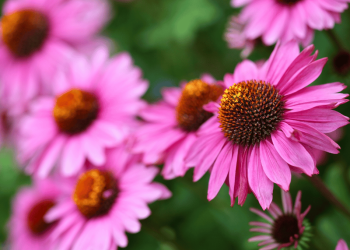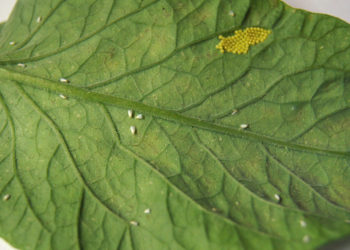Spotted Wing Drosophila (SWD) is working its way across the country, and it’s one of the most recent and largest infestations occurring in Indiana.
A type of vinegar fly first believed to have reared its ugly head in California, probably a hitchhiker on imports from Japan, this pernicious pest has effectively expanded its population and is becoming quite the nuisance.
The first signs of an infestation you may see are soft spots on the bottoms of your soft-skinned fruits like grapes and berries, though peaches, cherries, apples, apricots and tomatoes have also been infested. Vinegar flies are also called fruit flies; however, the Spotted Wing Drosophila, unlike other fruit flies, is able to puncture the skin of healthy, soft-skinned fruits with its serrated ovipositor, something the average female fruit fly doesn’t have. Prior to the discovery of this particular fruit fly, only over-ripened or rotting fruit was at risk. This short video will show you how to identify the Spotted Wing Drosophila.
SWD first caused serious crop damage in California in 2008 and since that time has spread throughout numerous states in the U.S., making its appearance in Michigan in the fall of 2010, the first indication the infestation had reached the North Central region of the United States, its easternmost sightings at this time.
That being said, if you’ve discovered unexplained mushy spots on your soft fruits, explore further by cutting the fruit open and then peeling or smashing the fruit in order to look for the larvae. They’ll be white and small, about 2 mm long and .5 mm in diameter (about the width of the lead in a mechanical pencil). They are relatively hard to see, especially in seeded fruits like raspberries, but patient watching will detect their movement if they are, in fact, there.
One way to determine if these nasty critters are visiting your garden is to build a trap. This video will show you how easy it is to build a Spotted Wing Drosophila trap. Being able to detect their presence ahead of time will enable you to take proactive measures in order to avoid their laying eggs in your produce, which will save the majority, if not all, of your fruit. Once you have an infestation, it will be harder to get rid of them and a lot of the damage will have already been done.
There are several insecticides registered for use, but one of the safest for use around your family and pets is an organic insecticidal spray with spinosads. Spinosads do no harm to beneficial insects, such as green lacewings, pirate bugs or ladybugs, but they will effectively suppress, kill or control a whole host of noxious garden pests, including SWD. A bacterial treatment, formulated through fermentation, spinosads can be used right up to the day of harvest on some fruits and it’s a fast-acting and odorless product. Due to the bacterial nature of spinosads, pests have not shown any inclination of becoming immune to it and it is approved for organic gardening by OMRI (Organic Materials Review Institute).
You should spray as soon as you know there are adult flies (but not while plants are still flowering), or when larvae are present in ripening fruit. Then follow these treatment guidelines for the most commonly infested fruits:
-
Apples reapply every 5 days, up to 6 times per season; wait 7 days to harvest
-
Peaches, Plums, Cherries, Apricots, Grapes reapply every 6 days, up to 6 times per season; wait 7 days to harvest cherries and plums, 14 days for peaches and apricots
-
Raspberries, Strawberries, Blackberries and Tomatoes reapply every 4 days, up to 6 times per season; wait 1 day to harvest
You should always refer to the product label on the container for specific mixing and usage directions.
As always, we wish you happy gardening and NO SWDs!





2 Comments
Mary
October 16, 2013 at 9:05 amHow harmful is the larva if you eat them?
jstutzman
October 22, 2013 at 12:46 pmMary, the Spotted Wing Drosophila larva are not harmful to you if eaten and you probably would not even know you did unless you seen them.